- Feminine Hygiene Market By Product Type (USD Billion, 2019-2035)
- Sanitary Napkins
- Tampons
- Menstrual Cups
- Panty Liners
- Feminine Hygiene Market By Distribution Channel (USD Billion, 2019-2035)
- Supermarkets
- Pharmacies
- Online Stores
- Convenience Stores
- Feminine Hygiene Market By Material (USD Billion, 2019-2035)
- Cotton
- Synthetic
- Biodegradable
- Feminine Hygiene Market By End User (USD Billion, 2019-2035)
- Teenagers
- Adults
- Older Women
- Feminine Hygiene Market By Regional (USD Billion, 2019-2035)
- North America
- Europe
- South America
- Asia Pacific
- Middle East and Africa
North America Outlook (USD Billion, 2019-2035)
North America Feminine Hygiene Market by Product Type
Sanitary Napkins
Tampons
Menstrual Cups
Panty Liners
North America Feminine Hygiene Market by Distribution Channel Type
Supermarkets
Pharmacies
Online Stores
Convenience Stores
North America Feminine Hygiene Market by Material Type
Cotton
Synthetic
Biodegradable
North America Feminine Hygiene Market by End User Type
Teenagers
Adults
Older Women
North America Feminine Hygiene Market by Regional Type
US
Canada
US Outlook (USD Billion, 2019-2035)
US Feminine Hygiene Market by Product Type
Sanitary Napkins
Tampons
Menstrual Cups
Panty Liners
US Feminine Hygiene Market by Distribution Channel Type
Supermarkets
Pharmacies
Online Stores
Convenience Stores
US Feminine Hygiene Market by Material Type
Cotton
Synthetic
Biodegradable
US Feminine Hygiene Market by End User Type
Teenagers
Adults
Older Women
CANADA Outlook (USD Billion, 2019-2035)
CANADA Feminine Hygiene Market by Product Type
Sanitary Napkins
Tampons
Menstrual Cups
Panty Liners
CANADA Feminine Hygiene Market by Distribution Channel Type
Supermarkets
Pharmacies
Online Stores
Convenience Stores
CANADA Feminine Hygiene Market by Material Type
Cotton
Synthetic
Biodegradable
CANADA Feminine Hygiene Market by End User Type
Teenagers
Adults
Older Women
Europe Outlook (USD Billion, 2019-2035)
Europe Feminine Hygiene Market by Product Type
Sanitary Napkins
Tampons
Menstrual Cups
Panty Liners
Europe Feminine Hygiene Market by Distribution Channel Type
Supermarkets
Pharmacies
Online Stores
Convenience Stores
Europe Feminine Hygiene Market by Material Type
Cotton
Synthetic
Biodegradable
Europe Feminine Hygiene Market by End User Type
Teenagers
Adults
Older Women
Europe Feminine Hygiene Market by Regional Type
Germany
UK
France
Russia
Italy
Spain
Rest of Europe
GERMANY Outlook (USD Billion, 2019-2035)
GERMANY Feminine Hygiene Market by Product Type
Sanitary Napkins
Tampons
Menstrual Cups
Panty Liners
GERMANY Feminine Hygiene Market by Distribution Channel Type
Supermarkets
Pharmacies
Online Stores
Convenience Stores
GERMANY Feminine Hygiene Market by Material Type
Cotton
Synthetic
Biodegradable
GERMANY Feminine Hygiene Market by End User Type
Teenagers
Adults
Older Women
UK Outlook (USD Billion, 2019-2035)
UK Feminine Hygiene Market by Product Type
Sanitary Napkins
Tampons
Menstrual Cups
Panty Liners
UK Feminine Hygiene Market by Distribution Channel Type
Supermarkets
Pharmacies
Online Stores
Convenience Stores
UK Feminine Hygiene Market by Material Type
Cotton
Synthetic
Biodegradable
UK Feminine Hygiene Market by End User Type
Teenagers
Adults
Older Women
FRANCE Outlook (USD Billion, 2019-2035)
FRANCE Feminine Hygiene Market by Product Type
Sanitary Napkins
Tampons
Menstrual Cups
Panty Liners
FRANCE Feminine Hygiene Market by Distribution Channel Type
Supermarkets
Pharmacies
Online Stores
Convenience Stores
FRANCE Feminine Hygiene Market by Material Type
Cotton
Synthetic
Biodegradable
FRANCE Feminine Hygiene Market by End User Type
Teenagers
Adults
Older Women
RUSSIA Outlook (USD Billion, 2019-2035)
RUSSIA Feminine Hygiene Market by Product Type
Sanitary Napkins
Tampons
Menstrual Cups
Panty Liners
RUSSIA Feminine Hygiene Market by Distribution Channel Type
Supermarkets
Pharmacies
Online Stores
Convenience Stores
RUSSIA Feminine Hygiene Market by Material Type
Cotton
Synthetic
Biodegradable
RUSSIA Feminine Hygiene Market by End User Type
Teenagers
Adults
Older Women
ITALY Outlook (USD Billion, 2019-2035)
ITALY Feminine Hygiene Market by Product Type
Sanitary Napkins
Tampons
Menstrual Cups
Panty Liners
ITALY Feminine Hygiene Market by Distribution Channel Type
Supermarkets
Pharmacies
Online Stores
Convenience Stores
ITALY Feminine Hygiene Market by Material Type
Cotton
Synthetic
Biodegradable
ITALY Feminine Hygiene Market by End User Type
Teenagers
Adults
Older Women
SPAIN Outlook (USD Billion, 2019-2035)
SPAIN Feminine Hygiene Market by Product Type
Sanitary Napkins
Tampons
Menstrual Cups
Panty Liners
SPAIN Feminine Hygiene Market by Distribution Channel Type
Supermarkets
Pharmacies
Online Stores
Convenience Stores
SPAIN Feminine Hygiene Market by Material Type
Cotton
Synthetic
Biodegradable
SPAIN Feminine Hygiene Market by End User Type
Teenagers
Adults
Older Women
REST OF EUROPE Outlook (USD Billion, 2019-2035)
REST OF EUROPE Feminine Hygiene Market by Product Type
Sanitary Napkins
Tampons
Menstrual Cups
Panty Liners
REST OF EUROPE Feminine Hygiene Market by Distribution Channel Type
Supermarkets
Pharmacies
Online Stores
Convenience Stores
REST OF EUROPE Feminine Hygiene Market by Material Type
Cotton
Synthetic
Biodegradable
REST OF EUROPE Feminine Hygiene Market by End User Type
Teenagers
Adults
Older Women
APAC Outlook (USD Billion, 2019-2035)
APAC Feminine Hygiene Market by Product Type
Sanitary Napkins
Tampons
Menstrual Cups
Panty Liners
APAC Feminine Hygiene Market by Distribution Channel Type
Supermarkets
Pharmacies
Online Stores
Convenience Stores
APAC Feminine Hygiene Market by Material Type
Cotton
Synthetic
Biodegradable
APAC Feminine Hygiene Market by End User Type
Teenagers
Adults
Older Women
APAC Feminine Hygiene Market by Regional Type
China
India
Japan
South Korea
Malaysia
Thailand
Indonesia
Rest of APAC
CHINA Outlook (USD Billion, 2019-2035)
CHINA Feminine Hygiene Market by Product Type
Sanitary Napkins
Tampons
Menstrual Cups
Panty Liners
CHINA Feminine Hygiene Market by Distribution Channel Type
Supermarkets
Pharmacies
Online Stores
Convenience Stores
CHINA Feminine Hygiene Market by Material Type
Cotton
Synthetic
Biodegradable
CHINA Feminine Hygiene Market by End User Type
Teenagers
Adults
Older Women
INDIA Outlook (USD Billion, 2019-2035)
INDIA Feminine Hygiene Market by Product Type
Sanitary Napkins
Tampons
Menstrual Cups
Panty Liners
INDIA Feminine Hygiene Market by Distribution Channel Type
Supermarkets
Pharmacies
Online Stores
Convenience Stores
INDIA Feminine Hygiene Market by Material Type
Cotton
Synthetic
Biodegradable
INDIA Feminine Hygiene Market by End User Type
Teenagers
Adults
Older Women
JAPAN Outlook (USD Billion, 2019-2035)
JAPAN Feminine Hygiene Market by Product Type
Sanitary Napkins
Tampons
Menstrual Cups
Panty Liners
JAPAN Feminine Hygiene Market by Distribution Channel Type
Supermarkets
Pharmacies
Online Stores
Convenience Stores
JAPAN Feminine Hygiene Market by Material Type
Cotton
Synthetic
Biodegradable
JAPAN Feminine Hygiene Market by End User Type
Teenagers
Adults
Older Women
SOUTH KOREA Outlook (USD Billion, 2019-2035)
SOUTH KOREA Feminine Hygiene Market by Product Type
Sanitary Napkins
Tampons
Menstrual Cups
Panty Liners
SOUTH KOREA Feminine Hygiene Market by Distribution Channel Type
Supermarkets
Pharmacies
Online Stores
Convenience Stores
SOUTH KOREA Feminine Hygiene Market by Material Type
Cotton
Synthetic
Biodegradable
SOUTH KOREA Feminine Hygiene Market by End User Type
Teenagers
Adults
Older Women
MALAYSIA Outlook (USD Billion, 2019-2035)
MALAYSIA Feminine Hygiene Market by Product Type
Sanitary Napkins
Tampons
Menstrual Cups
Panty Liners
MALAYSIA Feminine Hygiene Market by Distribution Channel Type
Supermarkets
Pharmacies
Online Stores
Convenience Stores
MALAYSIA Feminine Hygiene Market by Material Type
Cotton
Synthetic
Biodegradable
MALAYSIA Feminine Hygiene Market by End User Type
Teenagers
Adults
Older Women
THAILAND Outlook (USD Billion, 2019-2035)
THAILAND Feminine Hygiene Market by Product Type
Sanitary Napkins
Tampons
Menstrual Cups
Panty Liners
THAILAND Feminine Hygiene Market by Distribution Channel Type
Supermarkets
Pharmacies
Online Stores
Convenience Stores
THAILAND Feminine Hygiene Market by Material Type
Cotton
Synthetic
Biodegradable
THAILAND Feminine Hygiene Market by End User Type
Teenagers
Adults
Older Women
INDONESIA Outlook (USD Billion, 2019-2035)
INDONESIA Feminine Hygiene Market by Product Type
Sanitary Napkins
Tampons
Menstrual Cups
Panty Liners
INDONESIA Feminine Hygiene Market by Distribution Channel Type
Supermarkets
Pharmacies
Online Stores
Convenience Stores
INDONESIA Feminine Hygiene Market by Material Type
Cotton
Synthetic
Biodegradable
INDONESIA Feminine Hygiene Market by End User Type
Teenagers
Adults
Older Women
REST OF APAC Outlook (USD Billion, 2019-2035)
REST OF APAC Feminine Hygiene Market by Product Type
Sanitary Napkins
Tampons
Menstrual Cups
Panty Liners
REST OF APAC Feminine Hygiene Market by Distribution Channel Type
Supermarkets
Pharmacies
Online Stores
Convenience Stores
REST OF APAC Feminine Hygiene Market by Material Type
Cotton
Synthetic
Biodegradable
REST OF APAC Feminine Hygiene Market by End User Type
Teenagers
Adults
Older Women
South America Outlook (USD Billion, 2019-2035)
South America Feminine Hygiene Market by Product Type
Sanitary Napkins
Tampons
Menstrual Cups
Panty Liners
South America Feminine Hygiene Market by Distribution Channel Type
Supermarkets
Pharmacies
Online Stores
Convenience Stores
South America Feminine Hygiene Market by Material Type
Cotton
Synthetic
Biodegradable
South America Feminine Hygiene Market by End User Type
Teenagers
Adults
Older Women
South America Feminine Hygiene Market by Regional Type
Brazil
Mexico
Argentina
Rest of South America
BRAZIL Outlook (USD Billion, 2019-2035)
BRAZIL Feminine Hygiene Market by Product Type
Sanitary Napkins
Tampons
Menstrual Cups
Panty Liners
BRAZIL Feminine Hygiene Market by Distribution Channel Type
Supermarkets
Pharmacies
Online Stores
Convenience Stores
BRAZIL Feminine Hygiene Market by Material Type
Cotton
Synthetic
Biodegradable
BRAZIL Feminine Hygiene Market by End User Type
Teenagers
Adults
Older Women
MEXICO Outlook (USD Billion, 2019-2035)
MEXICO Feminine Hygiene Market by Product Type
Sanitary Napkins
Tampons
Menstrual Cups
Panty Liners
MEXICO Feminine Hygiene Market by Distribution Channel Type
Supermarkets
Pharmacies
Online Stores
Convenience Stores
MEXICO Feminine Hygiene Market by Material Type
Cotton
Synthetic
Biodegradable
MEXICO Feminine Hygiene Market by End User Type
Teenagers
Adults
Older Women
ARGENTINA Outlook (USD Billion, 2019-2035)
ARGENTINA Feminine Hygiene Market by Product Type
Sanitary Napkins
Tampons
Menstrual Cups
Panty Liners
ARGENTINA Feminine Hygiene Market by Distribution Channel Type
Supermarkets
Pharmacies
Online Stores
Convenience Stores
ARGENTINA Feminine Hygiene Market by Material Type
Cotton
Synthetic
Biodegradable
ARGENTINA Feminine Hygiene Market by End User Type
Teenagers
Adults
Older Women
REST OF SOUTH AMERICA Outlook (USD Billion, 2019-2035)
REST OF SOUTH AMERICA Feminine Hygiene Market by Product Type
Sanitary Napkins
Tampons
Menstrual Cups
Panty Liners
REST OF SOUTH AMERICA Feminine Hygiene Market by Distribution Channel Type
Supermarkets
Pharmacies
Online Stores
Convenience Stores
REST OF SOUTH AMERICA Feminine Hygiene Market by Material Type
Cotton
Synthetic
Biodegradable
REST OF SOUTH AMERICA Feminine Hygiene Market by End User Type
Teenagers
Adults
Older Women
MEA Outlook (USD Billion, 2019-2035)
MEA Feminine Hygiene Market by Product Type
Sanitary Napkins
Tampons
Menstrual Cups
Panty Liners
MEA Feminine Hygiene Market by Distribution Channel Type
Supermarkets
Pharmacies
Online Stores
Convenience Stores
MEA Feminine Hygiene Market by Material Type
Cotton
Synthetic
Biodegradable
MEA Feminine Hygiene Market by End User Type
Teenagers
Adults
Older Women
MEA Feminine Hygiene Market by Regional Type
GCC Countries
South Africa
Rest of MEA
GCC COUNTRIES Outlook (USD Billion, 2019-2035)
GCC COUNTRIES Feminine Hygiene Market by Product Type
Sanitary Napkins
Tampons
Menstrual Cups
Panty Liners
GCC COUNTRIES Feminine Hygiene Market by Distribution Channel Type
Supermarkets
Pharmacies
Online Stores
Convenience Stores
GCC COUNTRIES Feminine Hygiene Market by Material Type
Cotton
Synthetic
Biodegradable
GCC COUNTRIES Feminine Hygiene Market by End User Type
Teenagers
Adults
Older Women
SOUTH AFRICA Outlook (USD Billion, 2019-2035)
SOUTH AFRICA Feminine Hygiene Market by Product Type
Sanitary Napkins
Tampons
Menstrual Cups
Panty Liners
SOUTH AFRICA Feminine Hygiene Market by Distribution Channel Type
Supermarkets
Pharmacies
Online Stores
Convenience Stores
SOUTH AFRICA Feminine Hygiene Market by Material Type
Cotton
Synthetic
Biodegradable
SOUTH AFRICA Feminine Hygiene Market by End User Type
Teenagers
Adults
Older Women
REST OF MEA Outlook (USD Billion, 2019-2035)
REST OF MEA Feminine Hygiene Market by Product Type
Sanitary Napkins
Tampons
Menstrual Cups
Panty Liners
REST OF MEA Feminine Hygiene Market by Distribution Channel Type
Supermarkets
Pharmacies
Online Stores
Convenience Stores
REST OF MEA Feminine Hygiene Market by Material Type
Cotton
Synthetic
Biodegradable
REST OF MEA Feminine Hygiene Market by End User Type
Teenagers
Adults
Older Women


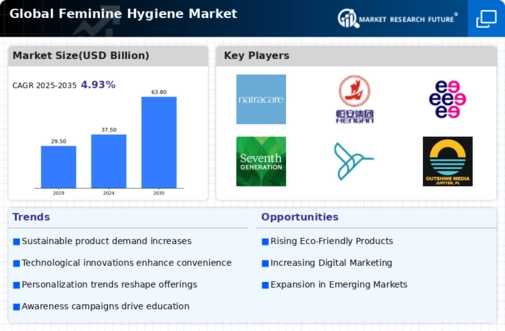
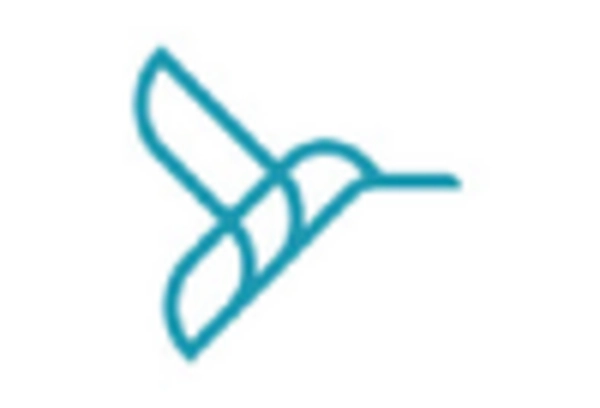

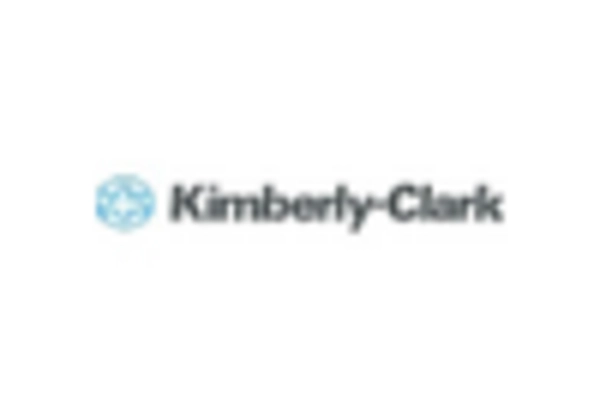
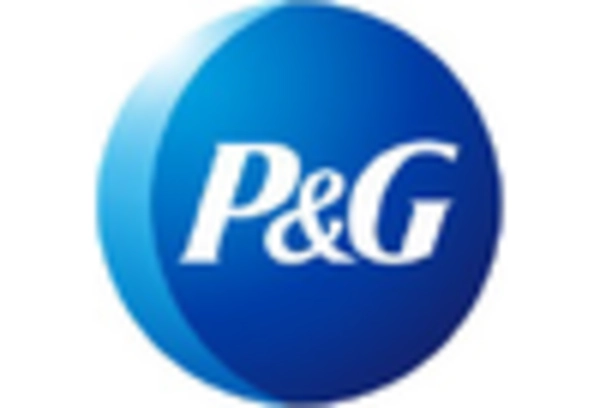
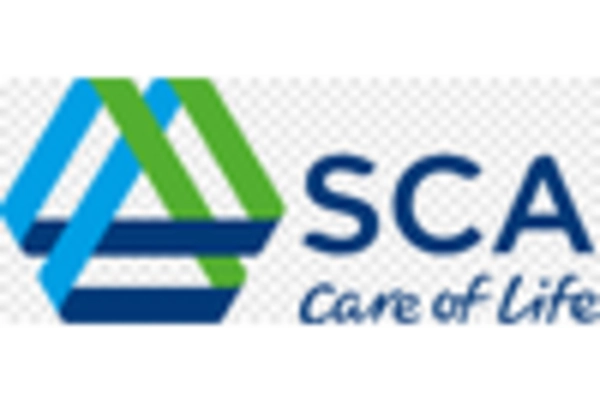
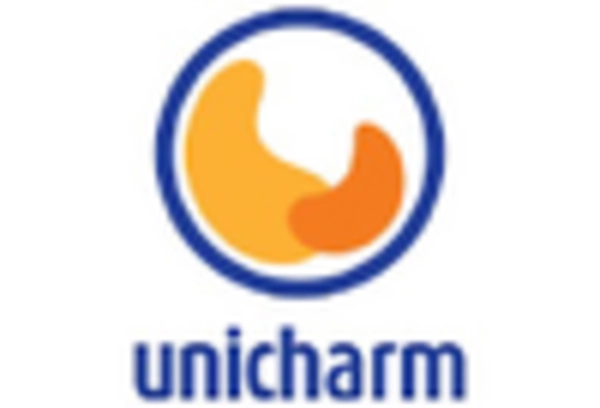









Leave a Comment